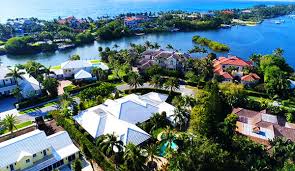
European and Canadian investors now account for a much bigger share of foreign investment in the residential and commercial markets in South Florida, according to a report by the National Association of Realtors (NAR) and data provided by Real Capital Analytics (RCA). And Asian countries remain engaged in the area. Singapore has been among the top five investors three times in the past three and a half years, and China accounted for the second largest source of foreign investment in 2016.
Commercial market:
The largest foreign investor in the commercial space over the past two years has been Canada, which invested $389.3 million this year as of August 2018 and $775.6 million in 2017, according to the data. Long attracted to South Florida residential properties in order to escape the dreary winters of the north, Canadians are showing interest once again in expanding into local commercial real estate.
Another factor in recent developments in the Canadian- South Florida real estate equation could be the emergence of new Canadian companies in the area. Bombardier opened a Learjet facility at the Fort Lauderdale-Hollywood Airport, and Canadian pharmaceutical giant Apotex is planning to move its U.S. headquarters to Miramar next year. As more Canadian companies expand in the region, some hope that the increased exposure to South Florida will increase their real estate investment in the area.
Last year, the German investment fund Bayerische Versorgungskammer (BVK) paid $283 million for 1111 Lincoln Road and an adjacent property in South Beach, marking one of the biggest deals in Lincoln Road’s history. In total, Germans invested $317.3 million in commercial real estate in South Florida in 2017, according to the data.
In recent years, South American countries, that used to be very active here, have dropped completely out of the top five when it comes to foreign commercial investment in South Florida, according to RCA data on commercial transactions of $2.5 million or more as of August 2018.
Residential market:
The same broader trends affecting foreign commercial real estate investment in South Florida are impacting the residential market. Currency devaluations have weakened the buying power for South American countries, while there is more interest from Europe.
Although data from NAR shows that 46 percent of foreign residential investment in South Florida in 2017 still came from Latin America and the Caribbean, Canadian buyers made up 19 percent of non-U.S. buyers in South Florida’s residential market.
There’s more parity between the Canadian and U.S. dollar, which is appealing to Canadians; they may also be attracted to the local prices, which are looking better than those back home. U.S. home prices rose by 4 percent in the second quarter of 2017, according to NAR, while prices in Canada’s residential market rose by 11 percent over the same period.
Europeans have also taken a greater interest in South Florida’s residential real estate. European buyers made up 18 percent of all foreign residential real estate investment in the area last year, according to RCA.
The French could also see an investment opportunity in South Florida housing prices, as those in Paris have soared in the past few years. In France’s capital city, housing prices have increased to more than 9,000 euros per square meter — which converts to about $900 per square foot — one of the highest rates ever in France’s history.
Ultimately, those watching the real estate market in South Florida say that the makeup of the foreign investors may shift, but the demand from elsewhere around the world will grow (source: The Real Deal).
FEB
2019

